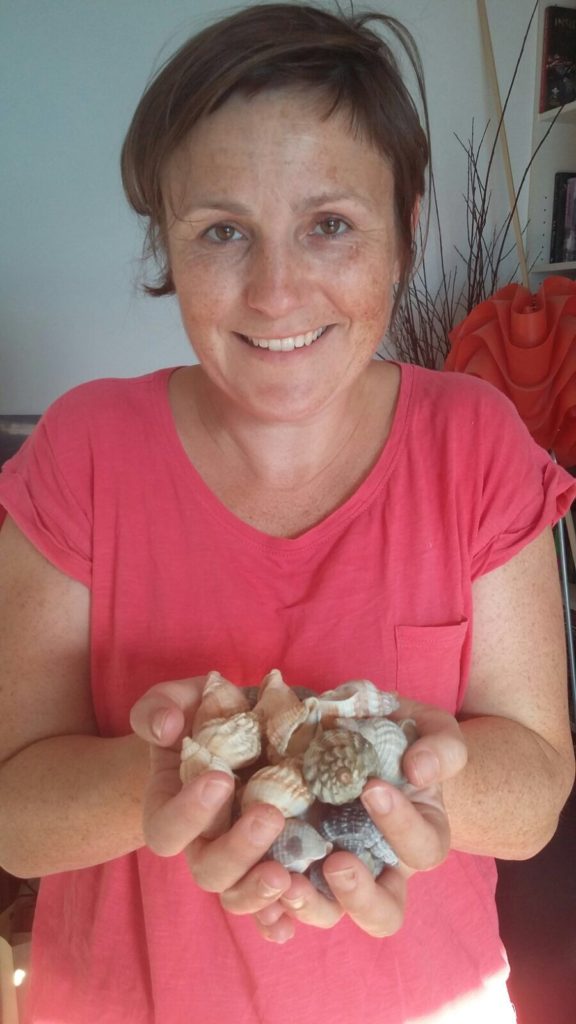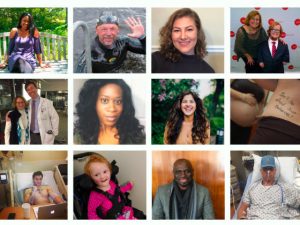Three years ago, when her left eye first started to itch, Anne Langford wasn’t too concerned. “It just felt like I had something in it,” she explains. Langford, who lives in London, visited her optician, who said it was probably just dry. The next day, though, she felt intense pain throughout her face.
“My husband’s grandma had shingles in her face in her 80s and this was just as she described,” says Langford, whose GP sent her to the local eye hospital right away.



“If a nurse says that, it means something.”
“My mum is a nurse,” recalls Langford. “Growing up, your legs had to be dropping off for any sympathy. At the hospital, the nurse took a look at my eye and said, ‘Oh, dear, I’m so sorry, you’ve got shingles.’ If a nurse says that, it means something.”
At the time, Langford was only 38. Shingles, also known as herpes zoster, tends to afflict those over 50. The virus is also responsible for chickenpox. Following infection, it remains in the body’s nerve tissue near the spinal cord and brain in dormant form. Sometimes it later reactivates as shingles, which causes a blistering rash and other painful side effects, including an ophthalmic condition known as viral anterior uveitis.
Uveitis is an umbrella term for inflammatory diseases of the eye. The conditions, which cause swelling and destroy eye tissue. Left untreated, uveitis can be devastating. It’s a leading cause of blindness that’s highly preventable. Uveitis can be short-lived or last a longtime.
“Your whole immune system goes into overdrive”
“When I get a uveitis flare-up, it’s very painful and I get very tired,” says Langford. “It rarely expresses just in your eye. Your whole immune system goes into overdrive.”
Langford requires daily low-dose steroid and antiviral treatments, but during flare-ups, she must follow a demanding regiment of eye drops.
“I need to take one type hourly for 16 hours, then another drop for intraocular eye pressure that’s similar to glaucoma, and caused by both the uveitis and the treatment for uveitis. I have special eye drops to help with the steroid and pressure eye drops, which can cause corneal thinning and cataracts.”
“I’m like the old lady who swallowed a fly,”she exclaims with good humor. “I take this for that and then this for that and on and on.”
Langford, whose last major flare-up was around Christmas 2017, says life grinds to bit of a halt when she has to take medications every half hour. She also can’t be outside in sunlight and struggles with her peripheral vision and depth perception when her uveitis is acting up. Langford, who is a theater actor and teaching artist, was only recently able to return to full-time work.
“There’s been some grumpiness.”
The past few years haven’t been easy, she admits. A few days before she came down with shingles, she’d gone on a 17 mile run, something she hasn’t done since. “I used to be incredibly active. I also used to read a lot and I can no longer really do that either because of the vision loss in my eye. There’s been some grumpiness.” (Langford laughs as her husband agrees in the background.) “But I am slowly getting back into fitness now, which is a positive note!”
To cope with her illnesses and the sudden dramatic changes they’ve caused to her life, Langford relies on medication and mindfulness.
“I used to meditate before I got ill but never got into it,” she says. “After I got ill, all I could focus on was pain. The book LivingWell With Pain and Illness helped me change my relationship to pain. I lean on it rather than fight it. It also suggests crowding out that [bad] stuff with good stuff. I can’t not put eye drops in or go to medical appointments, so I put things in my life that make me happy.”
“I’ve discovered a depth of experience in this enforced slowing down.”
That includes listening to the radio, getting a massage, and having a bath. “Just puttering around the house,” she says. “It feels like a real treat. I’ve also learned more about the value of friendships and family relationships. In some ways, my world has gotten smaller but also richer. I used to be super busy and I’ve discovered a depth of experience in this enforced slowing down.”
At first, her change in circumstances made her feel like she’d lost her confidence and courage. Now she’s rediscovered them by taking active charge of her health. She’s joined an achalasia patient support group and has gotten involved with uveitis medical research.
“You lose so much control,” she says. “I’m choosing to respond by actively being part of my community, by keeping it real,and by sharing my story and tips. I’ve learned so much from other people.”
Join Us!
Are you or someone you care for living with uveitis? Sign up to share your experiences with others.
Latest Posts
- Living with Alzheimer’s disease
- “A Hot MS” Celebrates the Everyday Disasters That Shape Patients’ Lives
- Breast Cancer, Surgery & Recovery: There’s Nothing “Routine” About It
- “It’s OK to Not Be a Superhero”
- From “Damaged Goods” to Small Victories: Growing Up with Mental and Physical Health Conditions


I was diagnosed with uveitis 16 years ago. It was first thought I had sarcoidosis but I was later diagnosed with MS. I ended up on Mitoxantrone because my MS was aggressive. Turns out chemo is a treatment for Uveitis too! I haven’t had a problem with it since then. I have other eye problems involving my optic nerve but not uveitis.